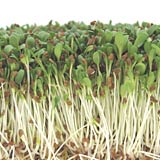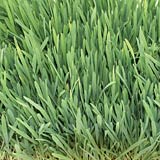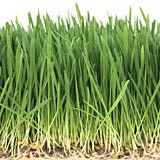- Home
- About
- Contact
- Receive our newsletter
- 1.800.201.3414
Fodder Questions
Hydroponically produced livestock feed has been used in Europe, Australia and New Zealand for decades but is still a relatively new idea here in the US. Take some time to review these general questions about fodder to familiarize yourself with the basics.
1) What is the digestibility of hay compared to fodder?
Hay has a digestibility of about 30% while fresh-grown fodder has a digestibility of 75% to 80%. This is because living protein molecules are smaller than dead protein molecules and are more easily passed through the intestine wall for absorption.
2) Do you have to use the fodder every day or can it be stored?
The beauty behind fodder is that it is a fresh, living, green feed that is harvested on a daily basis. It is recommended that you utilize that feed within 48 hours. For longer storage, we recommend you refrigerate the fodder. If you are traveling with your animals, fodder can be stored in a cooler.
3) How much of the fodder weight is water?
While moisture contents will vary based on the type of seed, fodder on average is over 75% moisture. Contact us for feed and forage reports or download them from the fodder feed pages.
4) Can you let the fodder grow past seven days for more poundage?
In our trials we didn't see a tremendous increase in poundage after the seven-day mark. We tried it with many different types of seeds growing for eight days, ten days, fourteen days, etc. From these trials we feel that the seven-day mark is really the optimum growing period. It's where you get the best bang for your buck, especially nutritionally.
5) Is the seed mat also edible?
Yes, the seed mat is completely edible and it actually adds extra fat and protein to the diet when consumed.
6) How tall is the fodder at harvest?
It depends on the type of seed that you are growing. Most of our wheat and barley fodder is between 7" and 8" tall at seven days.
7) What type of fodder should I grow?
The five most popular types of fodder we see customers producing are barley, wheat, oats, rye and triticale, as they are well-balanced nutritionally, and cost effective. When it comes to the type of fodder recommended for a specific animal, it will vary based on their current diet, their stage of life and other factors.
8) Can you replace grain with fodder?
For most livestock, fodder is intended to be a supplemental feed. This is due to the increased digestibility and moisture content compared to traditional feed. In reference to livestock rations, roughage refers to the amount of grass or hay the animal consumes. In our case, some of this will be coming from the fodder. Most likely hay will be supplemented in addition to the fodder, however, the amount will vary based on the animal and their energy needs. The rule of thumb is to feed 1% of the animals live body weight in roughage and supplement with 2% of the animals live body weight in fodder.
9) Is fodder organic?
We have confirmed with the USDA that fodder can be organic if organic seed is used and if it is grown following the organic standards set by the National Organic Program. The use of fodder must also be registered with the certifying agent for your operation. For more information on organic certification and the National Organic Program, view the information provided by the Agricultural Marketing Service on the USDA's website.
10) What are the protein levels of the grasses used for fodder?
Different grasses contain different levels of protein. When reviewing protein levels, keep in mind the increased digestibility of hydroponic fodder compared to dry feeds. You can download forage reports on their respective feed pages or contact us and we will send them to you.
11) Can you mix feed types, say barley and alfalfa, in the same tray?
Absolutely. Blends of seed can provide additional benefits to your animals because you are taking advantage of the nutritional qualities of both feeds. Please note that initially you will notice slightly different germination rates between the two types of seed, but at the end of seven days you will have full development from both.







